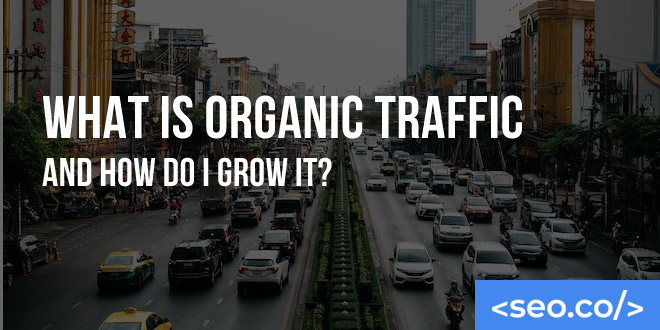
SEO Anchor Text: Variability & Diversity Best Practices for Link Building
When it comes to content marketing, SEO, and link building, there are dozens of important elements in play. But some are more critical than others. Anchor text certainly falls into the critical category. But do you know how to leverage on-site and off-site anchor text to your advantage in SEO? The anchor text variations that you use when linking to your web page are a crucial component of any SEO strategy. This is because search engines will use the anchor text variation as one ranking factor in determining how relevant a link is to the content on your site. In this article, we’ll discuss everything there is to know about proper anchor text variation, including exact match anchor text and how it can impact the SEO of your website. What is Anchor Text? Anchor text is the clickable text in a hyperlink. The anchor text can either be descriptive or generic, but it should always accurately reflect what the page being linked to contains. For example: “our company” vs. “click here”. Your website’s ranking on Google will depend largely upon how many links your site has and how relevant those links are when it comes to incoming traffic (i.e., whether they contain quality keyword phrases). The more high-quality backlinks you have pointing to your site, the higher likelihood that search engine rankings for your site content will improve over time – this is known as building an SEO foundation with link equity! On the HTML code side of things, it looks like this: On the user-facing side of things, it looks like this: Best SEO agency If it weren’t for anchor text, you’d have to write out the exact web address each time you wanted to link users to another linked page or resource. They would then need to copy and paste that link into their web browser. Anchor text provides a clickable shortcut that’s both aesthetically pleasing and convenient. But it goes far beyond looks. Anchor text is ultimately one of the top factors in the link building process. Why is Anchor Text Important for SEO? Anchor text is vitally important for SEO because it tells search engines what your website’s content is about. This ensures that your web pages will rank higher in SERPs (search engine result pages) as a result of the keywords you optimize them with and help provide more clarity to any potential visitor who lands on one of these web pages through organic or paid traffic channels. Ultimately, this all comes back to high-quality links. Higher quality anchors mean better rankings from authoritative sites – which means an ideal situation like higher click-through rates and conversion rates over time. Anchor text serves a variety of purposes and can be utilized in numerous ways, but the two biggest benefits – in terms of link building – are as follows: More link juice Google uses anchor text to help determine the relevancy of a link. So, while overly optimized keyword strings are no longer a best practice, keywords still matter to an extent – so long as they’re natural. The right anchor text can feed more link juice to the page being linked to. Some would even say it’s the single most important factor for backlinks (outside of the domain authority of the referring domain). Better clickability It’s not all about technical SEO. There’s also a practical aspect of anchor text. The right anchor text makes a link more attractive to human users and, as a result, more clickable. This drives traffic and engagement. (The benefits of which may include direct sales, but also enhanced SEO signals.) The Evolution of Anchor Text Anchor text has played a valuable role in SEO since, well, the origins of search engines. But that’s not to say things have stayed the same over the last couple of decades. Anchor text, much like every element of SEO, has undergone significant shifts over the past few years. Prior to 2011, keyword-rich anchor text was considered a best practice. If your keyword was “yummy chocolate brownies,” you were instructed to use anchor text like: Yummy chocolate brownies Buy yummy chocolate brownies Yummy chocolate brownies buy Buy yummy chocolate brownies online For more info on yummy chocolate brownies visit: yummychocolatebrownies.com Yummy chocolate brownies: yummychoclatebrownies.com Image link alt=yummychocolatebrownies The entire goal was to exploit the Google algorithm. There was nothing dishonest about this – it’s just the way the game worked back in those days. Some savvy SEO experts would find out what made the algorithm tick, and everyone would jump on. SEO was about manipulating the algorithm. Unfortunately, this came at the expense of user experience. It was possible to over-optimize with exact match anchor text and achieve impressive SERP rankings, yet have links that looked obnoxious, spammy, and out of place. Google saw webmasters manipulating anchor text and decided to make some major changes. In April 2012, the first Penguin update was released. And for anyone using the same keyword rich anchor text, rankings plummeted. And when rankings began to fall, so did traffic, and revenue. The whole cookie crumbled overnight. Ever since that first Penguin update, Google has continued to emphasize user experience, while implementing requirements that dissuade spammers from gaming the system. Anchor text is just as important today as it’s ever been – especially from an SEO perspective. It just looks a little different than it did 10 years ago. It includes ratios that are natural, including the surrounding text around the backlink and not just the anchor text in the link itself. What is Anchor Text Ratio? Anchor text ratio is the proportion of links on a website that uses any given keyword. This metric can be used to understand how prevalent keywords are in your SEO strategy and whether or not you need more content relating to those terms. The goal should always be an average anchor text ratio of about 20%. This means that for every 100 optimized pages, there will typically be about 20% with







